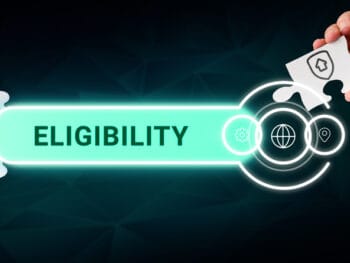Approximately half of all the dollars spent on workers compensation claims are used to pay indemnity benefits. These are the benefits paid to an injured worker to replace part of the worker’s lost income. The indemnity benefits vary in name among the various workers compensation jurisdictions, but can be separated into two basic types — temporary benefits and permanent benefits.
Temporary Benefits
Temporary benefits are further divided into two types — temporary total disability (TTD) and temporary partial disability (TPD) [with different names for the temporary indemnity benefits in different states]. TTD is paid to the injured employee when the employee is unable to return to work of any type while recovering from the injury. When the employee is partially recovered from an injury, but not fully recovered, the medical provider may allow the employee to return to work part-time. The employee is paid regular wages for the hours does work and TPD is paid to the employee to cover the hours each day the employee is unable to work.
Click Link to Access Free PDF Download
“5-Step Sequence to Coordinate Return-to-Work with ADA Compliance”
Permanent Benefits
Permanent benefits are also divided into two types — permanent total disability (PTD) and permanent partial disability (PPD) [with different names for the permanent indemnity benefits in different states]. When the employee reaches maximum medical improvement, the medical provider evaluates the employee’s ability to return to work. If the medical providers (the treating physician and an independent medical evaluator) both agree that the employee is unable to return to any type of employment, the employee is consider PTD and paid PTD benefits per the limitations in the state workers comp statutes. If the medical providers agree the employee has recovered enough to return to some type of employment but will always be partially disabled, the employee is classified as PPD and is paid PPD benefits per the state statutes.
Indemnity Benefits Calculation
The amount of the employee’s indemnity benefit is based on the employee’s prior pay history and the average weekly wage (AWW) earned by the employee. Most jurisdictions use two-thirds (66.67%) of the gross AWW as the amount to pay in indemnity benefits, but a few jurisdictions use 70% of the gross AWW. Also, a few jurisdictions use 75% or 80% of the employee’s net wages after taxes to calculate indemnity benefits.
The jurisdictions vary in the time frame used to calculate the AWW. Most jurisdictions use the previous 52 weeks as a time frame, but some states use the prior 13 weeks or the prior 26 weeks as the time frame.
An example using the AWW to calculate the TTD: The employee made $52,000 in the 52 weeks prior to the injury causing the disability. The AWW would be $1,000 with the TTD rate being $666.67 (two-thirds X $1,000).
An employee’s AWW in most jurisdictions includes all compensation, not just the wage or salary. The adjuster includes overtime pay, bonuses, commissions or any other form of compensation in determining the AWW. Also, some jurisdictions include the value of benefits if the employer suspends paying for those benefits during the time the employee is off work.
The amount of TTD has an upper limit cap and a minimum amount. The jurisdictions vary in the dollar amount for the upper limit and the lower limit. A jurisdiction might by statute state the maximum amount of TTD is $800.00 per week and the minimum amount of TTD is $100. 00 per week. An executive making $2,000.00 per week would not receive two thirds of his AWW of $2,000.00, or $1,333.34. The executive’s TTD would be capped at $800.00 per week. A part-time fast food worker making $120.00 would not be limited to two-thirds of his AWW, or $80.00. His TTD rate would be the state minimum rate of $100.00.
When Paid
The states vary in their requirements as to when indemnity benefits are paid. Some states require the payment of weekly indemnity benefits while other states require the indemnity benefits to be paid every two weeks. Some states require the first indemnity check to be issued on the 15th day after the injury (if the compensability of the claim is not being disputed) and subsequent checks to be issued on the same day of each of the following weeks as long as the employee is unable to work. Other states allow the insurer to determine what day the initial indemnity benefit check will be issued, with subsequent checks following weekly or every other week.
Issuance of the Indemnity Check
At most insurance companies and third party administrators, after the adjuster determines the amount of the weekly or bi-weekly indemnity check, the actual issuance of the check becomes a clerical function. The clerical person enters the information into the company computer for the first indemnity check to be issued. Most claim management systems are now automated to the point that the computer system takes over issuing and printing the subsequent indemnity checks until the computer is told to stop.
Delivery of the Indemnity Check
The two primary ways the indemnity checks reach the employee is the U.S. Mail or through direct deposit into the employee’s checking account. Some insurance companies have started the practice of putting a fraud notice on the back of indemnity check which states the check is for the payment of disability benefits and anyone cashing the check who is not disable is committing an act of fraud. This is of value only if the indemnity benefits check is mailed to the employee, requiring their endorsement. It is of no value if the check is being direct deposited into the employee’s checking account.
In a recent audit of a large self-insured Midwestern university, a third way of delivering the indemnity check to the employee was used. Unless the employee was hospitalized, the employee was required to come to the claims office each week to pick up the check. This allowed the workers comp adjuster to make personal contact with the employee weekly and allowed the claims department to visually evaluate the employee’s physical condition.
Account Instructions
The client instructions for most self-insured programs are silent on the requirements for the TPA when it comes to issuing indemnity payments. If the employer has had any issues with the TPA over the payment of indemnity benefits, the client instructions should be amended to include directions on when and how indemnity benefits will be paid.
For More Information
This brief synopsis does not cover all the information you may need to know about indemnity benefits. The websites of most state bureaus of workers compensation or industrial commissions will often have a discussion of indemnity benefits for their state. Another excellent source of information is the annual Analysis of Workers Compensation Laws guide published by the U.S. Chamber of Commerce. Of course, we are always glad to answer your questions about workers compensation. Please contact us for more information.
Author Rebecca Shafer, J.D. President, Amaxx Risks Solutions, Inc. has worked successfully for 20 years with many industries to reduce Workers’ Compensation costs, including airlines, healthcare, printing/publishing, pharmaceuticals, retail, hospitality and manufacturing. Contact: Info@ReduceYourWorkersComp.com
WC Calculator: http://www.LowerWC.com/calculator.php
TD Calculator: http://www.LowerWC.com/transitional-duty-cost-calculator.php
Do not use this information without independent verification. All state laws vary. You should consult with your insurance broker or agent about workers’ comp issues.
©2010 Amaxx Risk Solutions, Inc. All rights reserved under International Copyright Law.
















cbvngyj
Impressive object, I loved the assistive technology for students with autism part